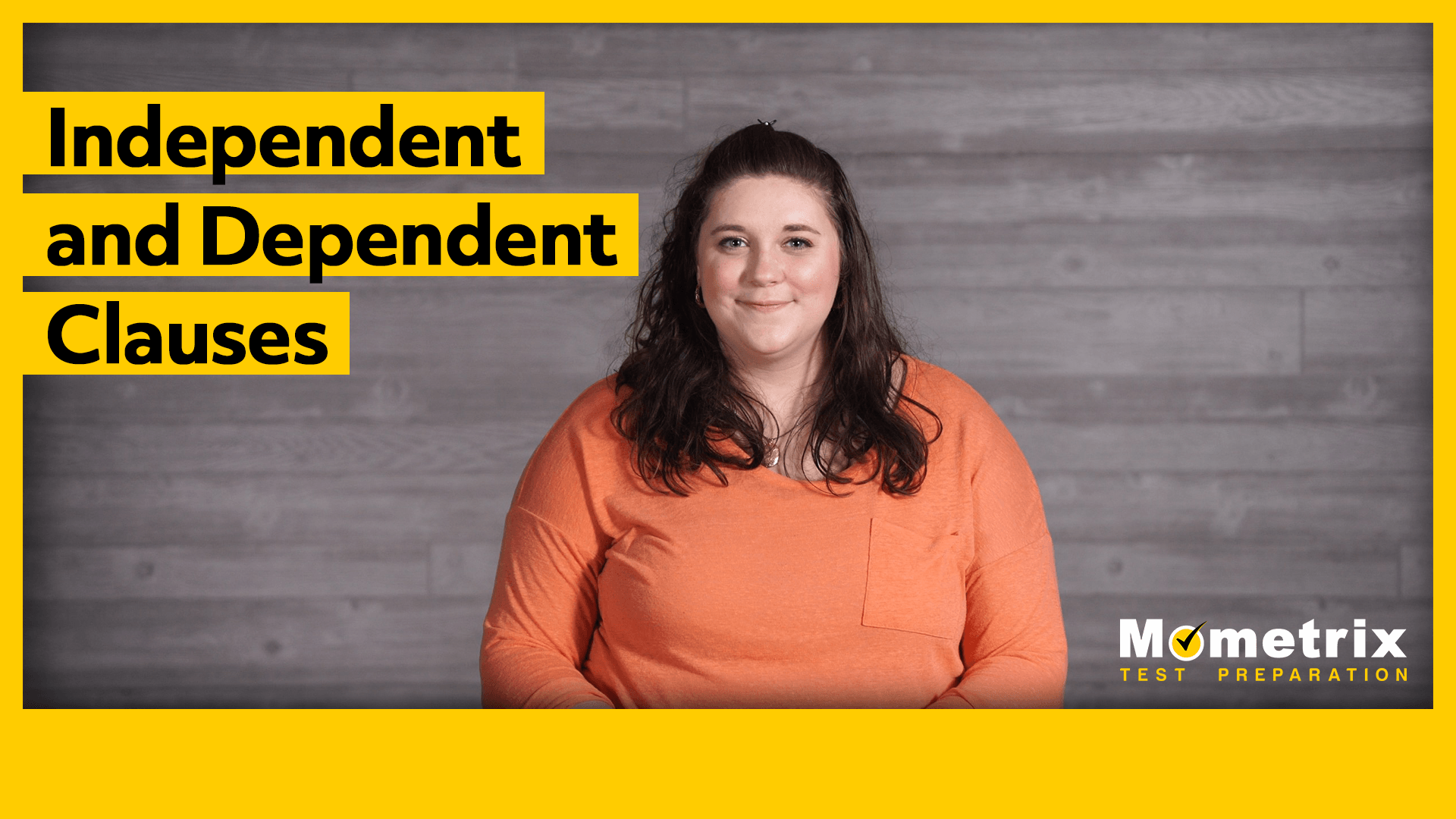
There is often a lot of confusion over the difference between independent and dependent clauses. These are both fancy names for relatively simple concepts. In this video, we’ll learn how to recognize them in your reading and how to use them effectively in your writing.
Let’s get started!
What is an Independent Clause?
First, let’s look at independent clauses. An independent clause is a grouping of words that can stand alone as its own sentence. In order to be an independent clause, there has to be:
The subject is who or what the sentence is about, while the action or predicate shows what the subject of the sentence does.
Independent Clause Examples
Here’s a very simple example:
In this short example, there is a subject, I, an action, write, and a complete thought is being expressed. This is, therefore, an example of an independent clause! Here are some other, longer examples:
The teacher wrote a mathematical equation on the chalkboard.
Again, these are independent clauses because they contain a subject, predicate, and express a complete thought.
Sometimes, multiple independent clauses are combined to create compound sentences. A common way to connect independent clauses is to use a conjunction. For example:
Note that “Andrew worked all night” and “he was still unable to complete the project” are both independent clauses. They could potentially stand alone as sentences. However, the use of a comma followed by a conjunction, but, allows this to work as a single sentence. Here are a couple more examples:
The tree’s leaves changed color, for it was the beginning of fall.
Another way to connect independent clauses is by using independent markers. Some of the more common independent marker words are also, consequently, however, furthermore, moreover, nevertheless, and therefore. When we use an independent marker word to connect two independent clauses, we always use a semicolon and a comma. For example:
The dog ate my homework; consequently, I was unable to hand it in the next day.
Always be sure to avoid using a comma to link two independent clauses. Doing so results in an error known as a comma splice.
Here, we have two independent clauses separated by a comma. There are a few ways to fix this error. You could add a conjunction after the comma: I love cheeseburgers, and this is one of the best I’ve ever eaten. You could use a period to create two separate sentences: I love cheeseburgers. This is one of the best I’ve ever eaten. Or, you could change the comma to a semicolon.
What is a Dependent Clause?
Okay, now let’s move to dependent clauses! A dependent clause is similar to an independent clause, because it is a group of words that contains both a subject and a predicate. The main feature that distinguishes the two is that a dependent clause does not express a complete thought.
Dependent Clause Examples
For example:
Here, there is a subject and a predicate, yet the thought is incomplete. What happened when I ate the chicken?
Dependent clauses often begin with dependent word markers, like the word when in this example. Other dependent word markers include after, although, as, as if, because, before, if, in order to, since, though, unless, until, whatever, when, whenever, whether, and while.
Let’s take a look at some other dependent clauses with these word markers:
Though the boy liked cherries
Because Linda hated working
Each of these are dependent clauses, since they contain a subject and a predicate but do not express a complete thought.
So, as you can see, distinguishing between independent and dependent clauses is relatively simple once you know what to look for. Remember that each type of clause contains a subject and predicate, but independent clauses go one step further and create a complete thought.
Review
Now, before we go, let’s look at a review question!
Which of these describes an independent clause?
- It can always be treated as a sentence.
- There can only be one independent clause in a sentence.
- It must contain a comma.
- It expresses an incomplete thought.
I hope this review was helpful! Thanks for watching, and happy studying!

